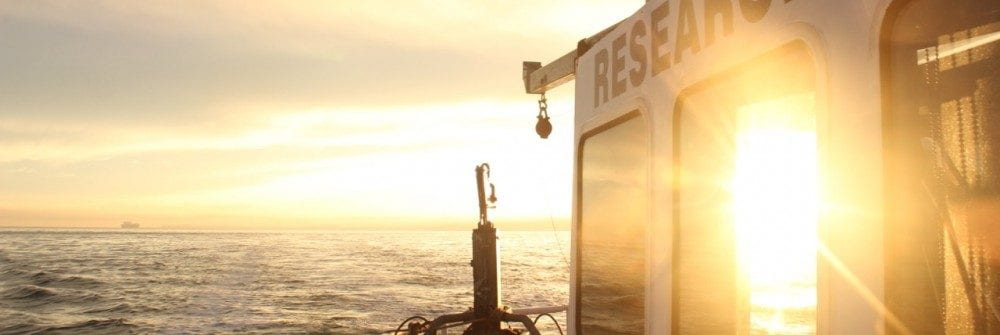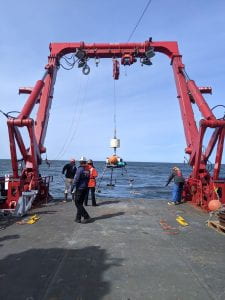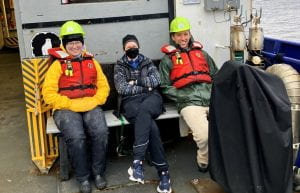As a part of the USGS-UW Cascadia Canyons project, the sediment dynamics group recently traveled down to the USGS Pacific Coastal and Marine Science Center in sunny Santa Cruz for one week of sediment core processing. The cores on the “operating table” this week were 9-meter-long jumbo piston cores collected from the muddy floor of Astoria Canyon between 700 and 1500 m water depth. The complete core processing workflow included CT density scanning, core splitting, photography and subsampling. Once our work was complete, we sealed cores into airtight tubes to be archived in a USGS core repository.
These cores are among the longest sediment records collected from this region of Astoria Canyon, and they have already given us valuable insight into canyon mass transport events (turbidity currents and debris flows) during Holocene sea level highstand. A primary feature of these cores are the turbidite deposits that vary in lithology, thickness, age and frequency from core to core. While the canyon was once thought to rarely experience mass transport during Holocene highstand, this new evidence indicates that several transport events have occurred within the last 300 years.

 A successful cruise on the R/V Sikuliaq in early April, 2023, has kicked off our year-long experimental program exploring sediment gravity flows on the Cascadia Margin. We placed moorings and bottom boundary layer tripods in the upper canyon reaches of two systems: Astoria and Quinault. These two canyons have very different morphologies and relationships with their modern-day sediment supply, the Columbia River. With the instrumentation we are hoping to capture a range of sediment gravity flows over the year-long deployment. Seabed coring of the canyon thalwegs and surrounding continental shelf and slope give us clues as to triggering mechanisms, gravity-flow dynamics and seabed deposits resulting from these flows. UW Sediment Dynamics group participants: Andrea Ogston, Chief Scientist; Evan Lahr, Tripod Builder and Coring Op Lead; and Sarah Vollero, Coring Ops.
A successful cruise on the R/V Sikuliaq in early April, 2023, has kicked off our year-long experimental program exploring sediment gravity flows on the Cascadia Margin. We placed moorings and bottom boundary layer tripods in the upper canyon reaches of two systems: Astoria and Quinault. These two canyons have very different morphologies and relationships with their modern-day sediment supply, the Columbia River. With the instrumentation we are hoping to capture a range of sediment gravity flows over the year-long deployment. Seabed coring of the canyon thalwegs and surrounding continental shelf and slope give us clues as to triggering mechanisms, gravity-flow dynamics and seabed deposits resulting from these flows. UW Sediment Dynamics group participants: Andrea Ogston, Chief Scientist; Evan Lahr, Tripod Builder and Coring Op Lead; and Sarah Vollero, Coring Ops. The project is being undertaken through a collaboration with the USGS Pacific Coastal and Marine Science Center (led by Dr. Jenna Hill and Kurt Rosenberger). In addition, we had the pleasure of being joined on the cruise by a UW Sediment Dynamics alumni, Dr. Emily Eidam, Oregon State University, and graduate students Adrian Heath (OSU) and Jonathan Moore (V Tech).
The project is being undertaken through a collaboration with the USGS Pacific Coastal and Marine Science Center (led by Dr. Jenna Hill and Kurt Rosenberger). In addition, we had the pleasure of being joined on the cruise by a UW Sediment Dynamics alumni, Dr. Emily Eidam, Oregon State University, and graduate students Adrian Heath (OSU) and Jonathan Moore (V Tech).